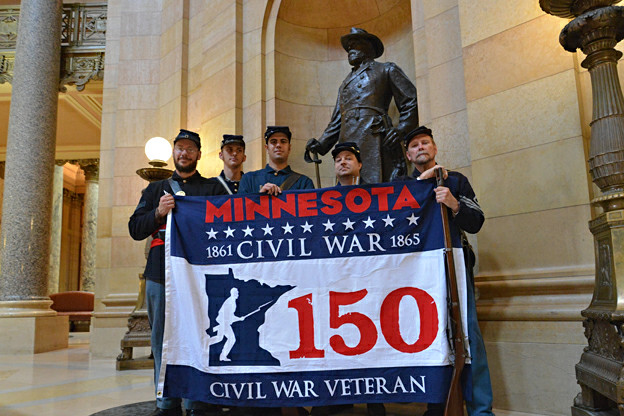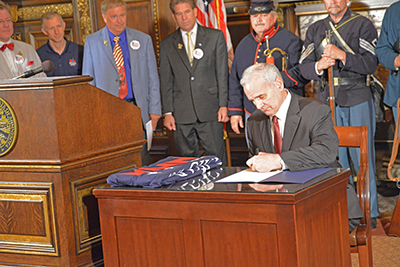

What’s in a name?
There was a letter I wrote in the Star Tribune on June 24th. Here it is:
About that well-known lake in southwest Minneapolis
A June 23 letter writer says about John C. Calhoun that “[c]ertainly he was wrong on slavery,” but it was a trifle when compared to Calhoun’s other accomplishments, apparently.
The letter writer also says: “Like Jefferson, Jackson and Washington, Calhoun died before the Civil War commenced, so we have no idea where he’d stand on secession.” That’s absurd. Calhoun whipped up sentiment in South Carolina against the 1832 federal Tariff Act, which resulted in South Carolina’s Nullification Act: secession lite. President Jackson told Calhoun that he was “standing on the brink of insurrection and treason.”
John C. Calhoun is the father of American sedition and treason on behalf of the cause of slaveholding. He is utterly unfit to be the namesake of a lake in the state that raised so many Civil War heroes, including those of the Minnesota First Regiment, which, on the second day of the Battle of Gettysburg, plunged into a hole in the Union line and held, virtually sacrificing itself, saving the day, the battle and maybe the Union.
I recommend changing the name to Lake (Col. William) Colvill.
I would like to amplify my remarks a little beyond what space considerations in the Strib would allow. If you really want to know about the First Minnesota Volunteers, I recommend Richard Moe’s book, the Last Full Measure of Devotion.
If you’d like to just read about the second day at the Battle of Gettysburg, Robert Bateman’s stirring account for Esquire Magazine would be hard to top. He wrote a series of articles about the Gettysburg engagement; Bateman is a now-retired military officer and historian. Here are just a few excerpts.
On the casualties suffered by the Minnesota Volunteers that day:
And at the summit, the very tippy-top of those regiments who could say “screw you” to any and all of the other units that had served in the entire war, was a regiment from Minnesota. Because one day at Gettysburg they lost more of their men who went into the fight than anybody else had — ever.
Now the Second Day of Gettysburg was in many ways the day when the flames really reached their full heights. Controversies abound — and in the comments section I will be happy to debate some of them with you — but in my professional opinion this was the decisive day. Yes, there will be a grand charge tomorrow. Yes, for various reasons that final infantry attack entered American mythology as the “High Water Mark” of the attempted departure from the United States by several states then in rebellion. But as I read, think, rethink, and learn from my betters, I keep coming back to the Second Day.
Here’s the scene on Seminary Ridge:
The scene is the center of the American line. Most of the attacks on the flanks have been repulsed by now, or nearly so, and the sun is near to setting. The American lines are now almost set into the famous “fish-hook” formation that one can find on so many maps. But the operative word is “almost.”
In the center, there is a gap because one American Corps commander took it upon himself to move well forward earlier in the fight. The rebels are now finishing crushing that Corps. But ever since that audacious Union Corps commander created that gap in the first place, a succession of recently arriving units have been fighting to keep the middle from collapsing. Now, as the sun sets over Seminary Ridge, the game is almost over. But there is a half-mile opening in the remaining American line, and two whole rebel brigades are headed straight to it.
Who can the Union send to repel the attack?
General Hancock sees a single American regiment available. But, though it is a “regiment,” this is in name only at this point. A “regiment,” at the beginning of the war, would be roughly 1,000 men. Before Hancock stand 262 men in American blue. Coming towards them, little more than 250 yards away now, are two entire brigades of rebels. Most directly, half of that force — probably about some 1,500 men from a rebel brigade — were coming dead at them. Perhaps a thousand more, at least two entire additional regiments, were on-line with that main attack, though probably unseen by Hancock. But what does that matter? The odds were, already, beyond comprehension.
“My God! All these all the men we have here…What regiment is this?” Hancock yelled.
“First Minnesota,” responded the colonel, a fellow named Colvill.
“Attack,” says General Hancock, and the First Minnesota did, even though the men could plainly see what lay before them, with Col. Colvill leading from the front.
They charged, with fixed bayonets, to win 300 seconds for the United States. Union and Confederate sources agree on this next point: There was no slacking, no hesitation, no faltering. The 1st Minnesota charged, en masse, at once alone and together. One hundred and fifty years later, those 300 seconds they then won for the United States have proven timeless. Because it worked. They threw a wrench into the rebel attack, stalling it, before the inevitable end.
The pivotal stand, on the pivotal day, of the pivotal battle of the Civil War.
There is a statute of Col. Colvill in the Capitol, which regrettably you can’t visit right now because the Capitol is closed for renovation. The photo above was taken by me the day that Governor Dayton signed a proclamation at the time of the 150th anniversary of the Battle of Gettysburg.

Next week is the 152nd anniversary of the Battle of Gettysburg.
If we renamed Lake Calhoun to Lake Colvill, the Minnesota Historical Society could erect a marker to explain the astonishing heroism of Col. Colvill and his men, heroism that was required in the first place because of the seditious groundwork laid by John C. Calhoun in the last two decades of his life.
I think there would be a certain symmetry in this, and a story and message that would not be lost on future Minnesotans.
Update (6/26): And the poisonous, traitorous crackers like Bobby Jindahl and Mike Huckabee are following in Calhoun’s footsteps again today, the day that the Supreme Court decided Obergefell v. Hodges, declaring that same-sex marriage was the law of the land. Nullification! they say. Get rid of the Supreme Court! These lowlifes are dangerous demagogues.
Update: (7/2/24): The lake was renamed Bde Maka Ska, of course, which is fine with me.
Thanks for your feedback. If we like what you have to say, it may appear in a future post of reader reactions.

